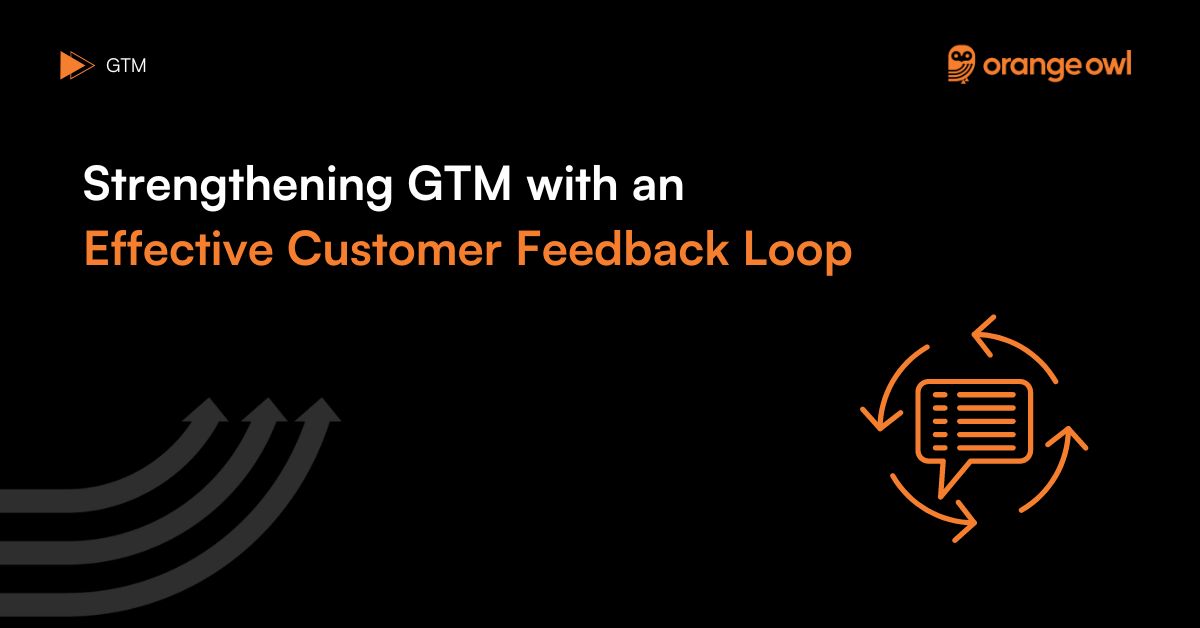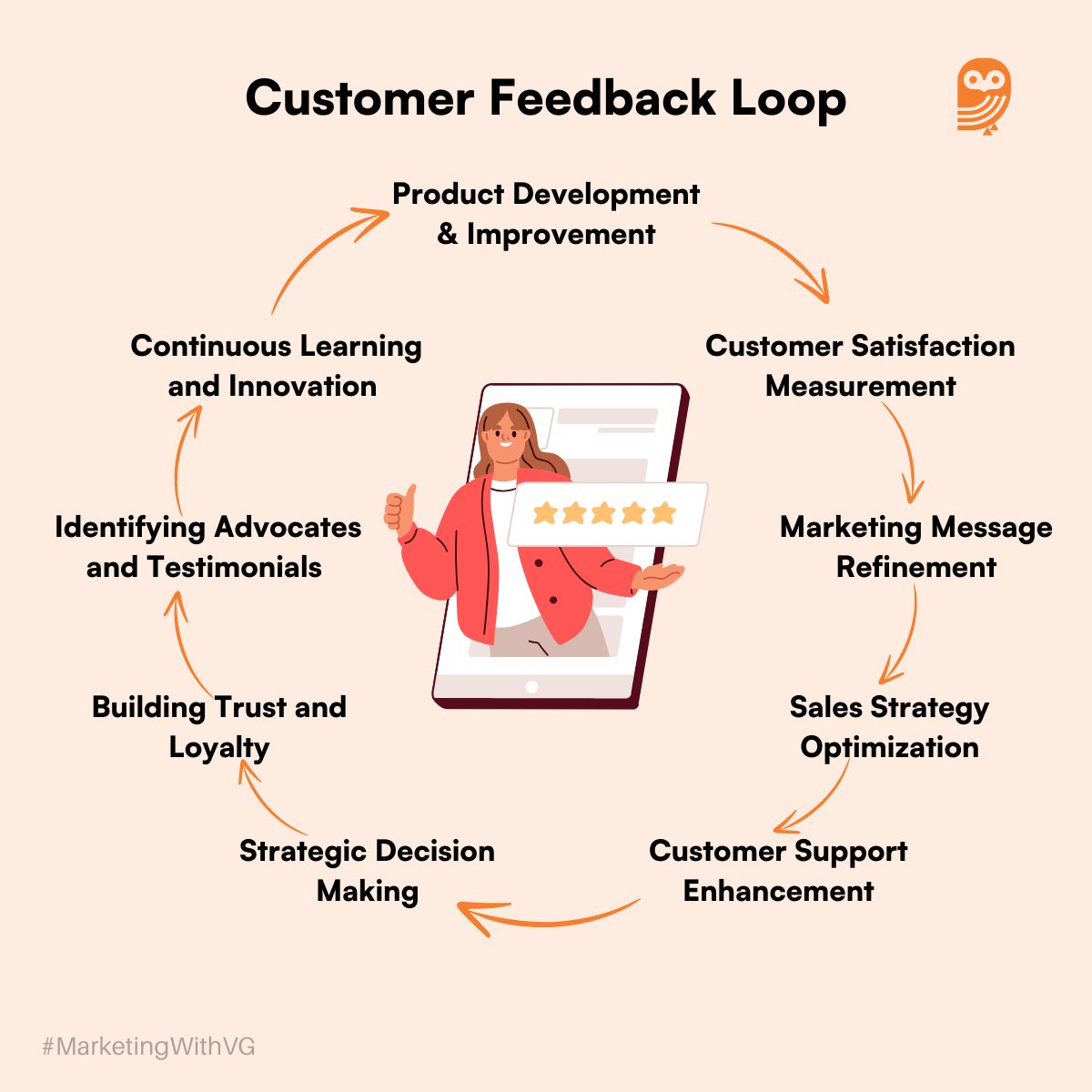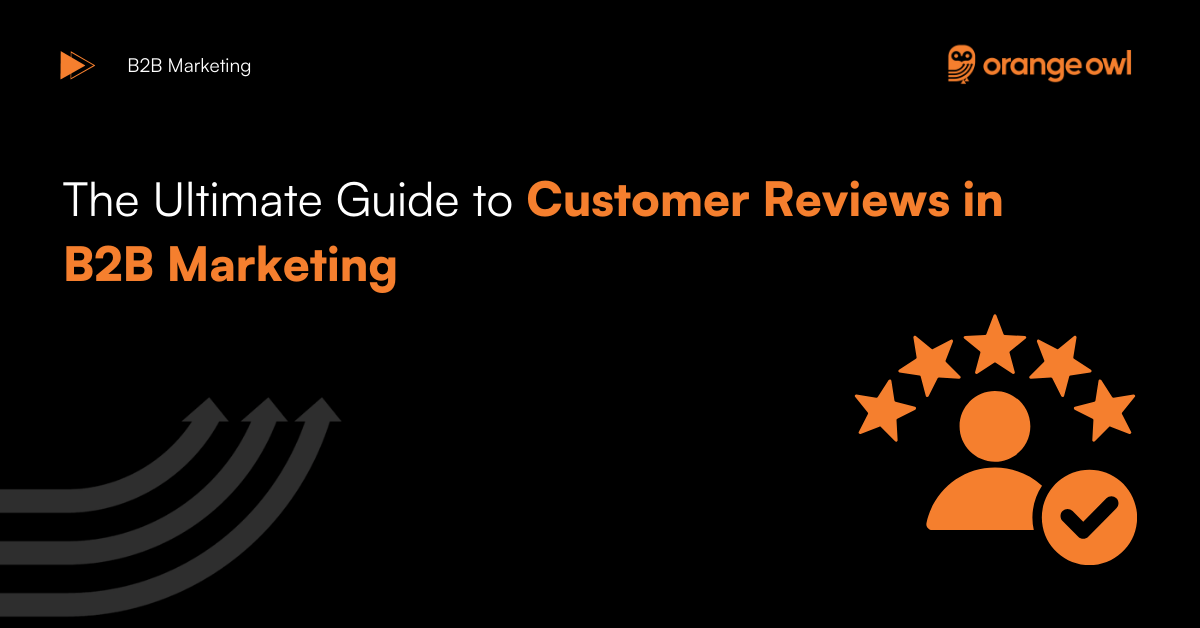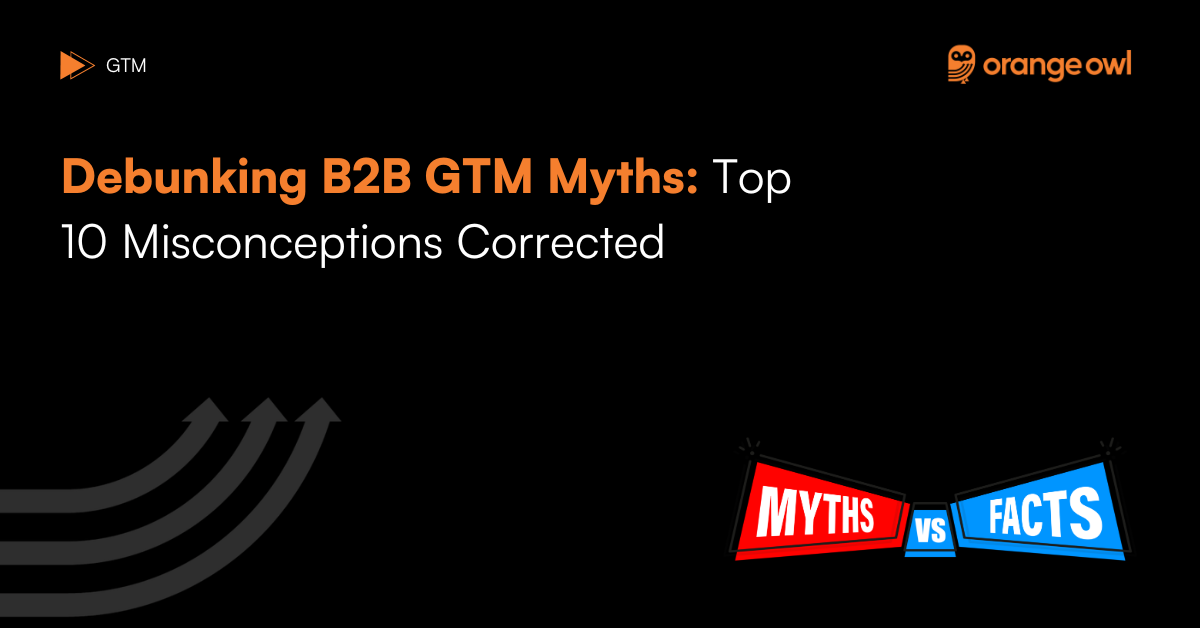Strengthening GTM with an Effective Customer Feedback Loop
Orange Owl
May 30, 2024

Table of Contents
In our ongoing exploration of B2B GTM Strategies, we delve into a critical component that fuels continuous improvement and customer-centricity: integrating a robust customer feedback loop. By actively seeking and leveraging customer feedback, businesses can refine their offerings, optimize their strategies, and foster long-term relationships with their clientele.
Understanding the Importance of Customer Feedback Loop

A feedback loop is a systematic process of collecting, analyzing, and acting upon customer feedback to drive improvements and innovation across all facets of the GTM strategy. It serves as a vital link between businesses and their customers, facilitating communication, understanding, and alignment.
In today’s hyper-competitive business landscape, where customer expectations are constantly evolving, a proactive approach to gathering and acting upon feedback is indispensable. Businesses that prioritize customer feedback demonstrate a commitment to customer-centricity and continuous improvement, positioning themselves for sustainable growth and success.
Impact of Customer Feedback on GTM Strategy
Integrating a feedback loop into your GTM strategy yields multifaceted benefits that profoundly impact various aspects of your business operations:
1. Product Development and Improvement: Customer feedback provides invaluable insights into product performance, usability, and feature preferences. By listening to customer voices, businesses can prioritize enhancements, fix issues promptly, and innovate proactively.
Expert Tip: Implement tools like in-app surveys, feedback forms, and user forums to gather real-time feedback directly from customers during their interaction with the product. Additionally, consider organizing focus groups or beta testing programs to gather qualitative feedback on new features or product iterations.
2. Customer Satisfaction Measurement: Regularly assessing customer satisfaction through metrics like Net Promoter Score (NPS) and Customer Satisfaction Score (CSAT) enables businesses to gauge the effectiveness of their GTM strategy. These metrics quantify customer sentiment, identify areas for improvement, and measure overall loyalty.
Expert Tip: Design surveys that are concise, easily accessible, and strategically timed to capture feedback at key touchpoints in the customer journey. Analyze feedback trends over time to identify areas of improvement and track progress in enhancing customer satisfaction levels.
3. Marketing Message Refinement: Customer feedback serves as a compass for refining marketing messages and campaigns. Understanding customer perceptions, pain points, and language nuances empowers marketers to tailor their messaging for maximum resonance and engagement.
Expert Tip: Leverage sentiment analysis tools to extract actionable insights from customer feedback data, guiding the optimization of marketing content and strategies. Conduct A/B testing of marketing messages to identify which resonates most effectively with different customer segments.
4. Sales Strategy Optimization: Insights gleaned from customer feedback shed light on sales process inefficiencies, objections, and customer needs. Sales teams can leverage this intelligence to refine their tactics, personalize their approach, and ultimately drive higher conversion rates.
Expert Tip: Foster collaboration between sales and customer support teams to identify recurring customer concerns and align sales strategies accordingly. Develop sales training programs that emphasize active listening, empathy, and problem-solving skills to enhance customer engagement and satisfaction during the sales process.
5. Customer Support Enhancement: Feedback illuminates areas for improvement in customer support operations, such as response times, service quality, and issue resolution. By addressing customer pain points promptly, businesses can bolster customer satisfaction, loyalty, and retention.
Expert Tip: Implement a multi-channel support system that allows customers to provide feedback seamlessly across various touchpoints, including email, chat, and social media. Leverage customer support metrics like First Response Time (FRT) and Customer Effort Score (CES) to identify areas for improvement and track progress in enhancing the support experience.
6. Strategic Decision-Making: Aggregated customer feedback serves as a compass for strategic decision-making, guiding market expansion initiatives, resource allocation, and long-term business strategies. Businesses can adapt and evolve in alignment with customer needs and market dynamics, ensuring relevance and competitiveness.
Expert Tip: Establish a cross-functional feedback review committee comprising representatives from key departments to analyze, prioritize, and act upon customer feedback systematically. Develop a feedback-driven decision-making framework that integrates customer insights into strategic planning processes and investment decisions.
7. Building Trust and Loyalty: Actively soliciting and acting upon customer feedback demonstrates a commitment to customer-centricity and continuous improvement. By listening attentively and responding effectively, businesses can earn trust, foster loyalty, and cultivate lasting relationships with their clientele.
Expert Tip: Communicate transparently with customers about how their feedback is being utilized to drive positive change, fostering a sense of partnership and mutual respect. Develop a customer feedback action plan that outlines specific initiatives and timelines for addressing feedback and communicating outcomes to customers.
8. Identifying Advocates and Testimonials: Positive feedback identifies satisfied customers who can serve as brand advocates and provide testimonials. Leveraging these advocates’ voices in marketing campaigns and case studies bolsters credibility, fosters social proof, and attracts new prospects.
Expert Tip: Encourage and incentivize satisfied customers to share their success stories and experiences with your product or service, amplifying their impact as brand ambassadors. Develop a customer advocacy program that rewards loyal customers for referrals, testimonials, and participation in case studies or speaking engagements.
9. Continuous Learning and Innovation: A feedback loop fosters a culture of continuous learning and innovation within organizations, keeping them agile, responsive, and competitive in dynamic market environments. By embracing feedback as a catalyst for improvement, businesses can stay ahead of the curve and meet evolving customer needs effectively.
Expert Tip: Encourage a growth mindset across the organization, where experimentation, iteration, and adaptation are celebrated as essential drivers of success. Implement regular knowledge-sharing sessions, innovation challenges, and cross-functional brainstorming workshops to foster a culture of creativity and collaboration.
Conclusion
Incorporating a structured customer feedback loop into your GTM strategy isn’t just advantageous; it’s imperative for maintaining competitiveness and relevance in today’s dynamic marketplace. By embracing customer feedback as a catalyst for continuous improvement and innovation, businesses can stay ahead of the curve, meet evolving customer needs, and drive sustainable growth. Remember, listening to your customers isn’t just good practice – it’s the cornerstone of a customer-centric GTM approach that leads to lasting success in the B2B arena.

FAQ’s
A customer feedback loop is a systematic process of collecting, analyzing, and acting upon customer feedback to drive improvements in B2B GTM (Go-to-Market) strategies. It’s crucial as it helps businesses understand customer needs, refine offerings, and enhance customer satisfaction.
By gathering and acting upon customer feedback regularly, businesses can continuously improve their products, services, and strategies to better align with customer needs and preferences, fostering a customer-centric approach.
Key components include
- Methods for collecting feedback
- Analyzing data
- Implementing changes based on feedback
- Closing the loop by informing customers of actions taken.
Methods include in-app surveys, feedback forms, user forums, focus groups, beta testing programs, and regular customer satisfaction surveys.
Businesses can use sentiment analysis tools, categorize feedback themes, and track trends over time to identify areas for improvement and prioritize actions.
Metrics like Net Promoter Score (NPS), Customer Satisfaction Score (CSAT), and Customer Effort Score (CES) are commonly used to measure satisfaction and loyalty.
Customer feedback provides insights into product performance, usability, and feature preferences, helping prioritize enhancements and innovations.
Customer feedback helps understand perceptions, pain points, and language nuances, empowering marketers to tailor messages for resonance and engagement.
Sales teams can identify objections, customer needs, and process inefficiencies from feedback, refining tactics, and personalizing approaches for better engagement.
Establish cross-functional feedback review committees, develop feedback-driven decision-making frameworks, and communicate transparently with customers about actions taken based on their feedback.


